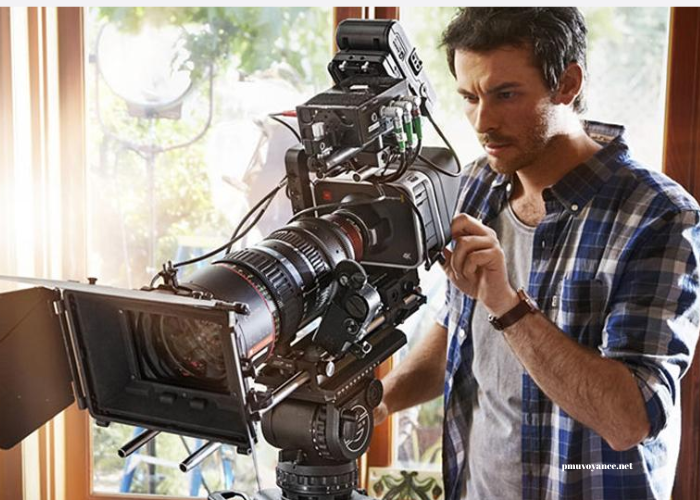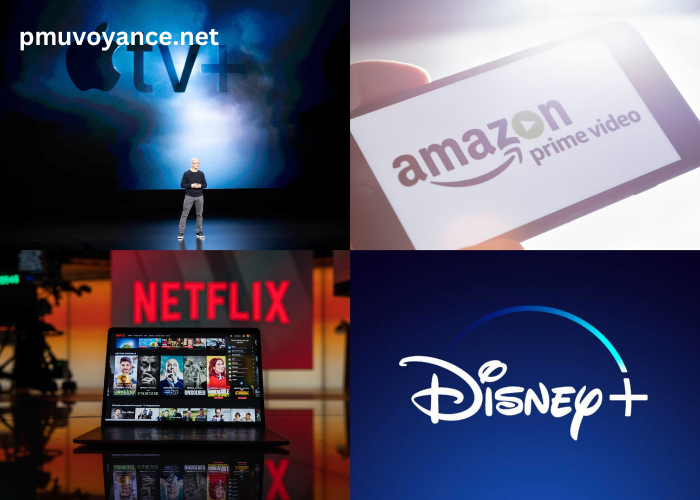Storytelling has been an integral part of human culture for millennia, evolving from oral traditions passed down through generations to written literature and eventually into the visual medium of cinema. As technology, culture, and society change, so too does the way we tell stories. Modern cinema has become a powerful vessel for storytelling, blending visual artistry, technological advancements, and narrative complexity to engage audiences like never before. The evolution of storytelling in modern cinema is a fascinating journey that reflects broader changes in society, culture, and technology, as well as shifts in the way we understand and experience stories.
Early Cinema: The Silent Era and the Language of Visuals
Cinema began its journey in the late 19th and early 20th centuries, starting with the silent film era. During this time, filmmakers relied heavily on visuals to convey narrative, as spoken dialogue was absent and subtitles were often used sparingly. Early pioneers like Georges Méliès, known for his imaginative films like A Trip to the Moon (1902), and D.W. Griffith, whose The Birth of a Nation (1915) broke new ground in cinematic techniques, showed how cinema could be used to tell stories without words.
In these early days, storytelling was primarily visual, relying on actors’ exaggerated expressions, body language, and the innovative use of camera techniques like close-ups and cross-cutting to convey emotions and narrative progression. Silent films demonstrated how powerful visual storytelling could be, forcing filmmakers to develop a “visual grammar” of cinema that would form the foundation of the medium.
With the advent of synchronized sound in the late 1920s, marked by the release of The Jazz Singer (1927), cinema entered a new phase. Dialogue could now be integrated with visuals, allowing filmmakers to explore more complex narratives and character development. This transition from silent to sound films represented the first significant shift in storytelling, as it opened the door to more nuanced character interactions and plot-driven stories.
The Golden Age of Hollywood: Classic Story Structures and Genre Films
The Golden Age of Hollywood, spanning from the 1930s to the 1950s, marked the rise of the studio system and the establishment of recognizable storytelling conventions. During this period, many of the storytelling structures that continue to influence modern cinema were solidified. Films were produced under strict studio control, with clear genre distinctions such as Westerns, film noir, musicals, and romantic comedies.
This era saw the rise of the “three-act structure,” a narrative framework that divides a story into three parts: setup, confrontation, and resolution. This structure became the dominant approach in Hollywood filmmaking, offering a reliable formula for engaging audiences and delivering satisfying conclusions. Iconic films like Gone with the Wind (1939), Casablanca (1942), and Citizen Kane (1941) set the standard for storytelling, combining strong characters, engaging plots, and emotional arcs.
Genres played a significant role in shaping how stories were told. Westerns, for example, often explored themes of individualism, morality, and frontier justice, while film noir focused on crime, moral ambiguity, and dark, cynical perspectives on human nature. Musicals, on the other hand, used song and dance to express emotion and advance the plot in unique ways. Each genre had its own storytelling conventions, but they all followed the broader narrative principles that defined the era: clear protagonists, defined conflicts, and ultimately, resolution.
Post-War Cinema: Breaking Boundaries and Experimentation
The post-World War II period brought about significant changes in cinema, as filmmakers began to push the boundaries of traditional storytelling. This era, particularly in the 1950s and 1960s, saw the rise of European cinema and auteur theory, with filmmakers like Federico Fellini, Ingmar Bergman, and Jean-Luc Godard experimenting with narrative structures, character development, and cinematic form.
In contrast to the classical Hollywood narrative, which emphasized plot-driven stories with clear resolutions, European filmmakers often embraced ambiguity, psychological depth, and non-linear storytelling. Films like Fellini’s 8½ (1963), Bergman’s Persona (1966), and Godard’s Breathless (1960) challenged traditional storytelling conventions by focusing on character psychology, existential themes, and fragmented narratives.
In Hollywood, the influence of European cinema began to reshape American storytelling as well. The 1960s and 1970s saw the rise of New Hollywood, a period marked by a more personal and experimental approach to filmmaking. Directors like Martin Scorsese, Francis Ford Coppola, and Stanley Kubrick brought a new level of complexity to American cinema, often dealing with darker themes, morally ambiguous characters, and unconventional narratives. Films like Taxi Driver (1976), Apocalypse Now (1979), and 2001: A Space Odyssey (1968) broke away from traditional storytelling molds, offering more open-ended and thought-provoking narratives that invited audiences to interpret meaning for themselves.
The Blockbuster Era: Spectacle and Simplified Storytelling
The late 1970s and 1980s introduced the blockbuster era, a period dominated by high-concept films that emphasized spectacle and mass appeal. This era was largely driven by the success of films like Steven Spielberg’s Jaws (1975) and George Lucas’s Star Wars (1977), which redefined what cinema could achieve in terms of special effects, marketing, and global box office success.
While these films were groundbreaking in terms of their technological achievements and visual storytelling, they also represented a shift toward more simplified, formulaic narratives aimed at reaching the broadest possible audience. Blockbuster films often relied on well-worn story archetypes, such as the hero’s journey, which George Lucas famously used as the framework for Star Wars. This approach focused on clear, easily understandable storylines, larger-than-life characters, and high stakes, which made these films accessible to audiences around the world.
Despite the simplification of narrative structures, blockbusters also introduced new ways to tell stories through visual effects and sound design. Films like E.T. (1982), Indiana Jones (1981), and Jurassic Park (1993) utilized cutting-edge technology to create immersive worlds and thrilling experiences. The emphasis on spectacle over nuanced storytelling became a defining characteristic of the blockbuster era, but it also set the stage for the next wave of cinematic evolution.
The Rise of Independent Cinema: Diverse Voices and Complex Narratives
The 1990s witnessed the rise of independent cinema, which offered a counterbalance to the mainstream blockbuster culture. Independent filmmakers brought fresh perspectives, diverse voices, and more complex, character-driven narratives to the forefront. This period saw the emergence of directors like Quentin Tarantino, Richard Linklater, and the Coen Brothers, who blended genre conventions with unconventional storytelling techniques.
Tarantino’s Pulp Fiction (1994) is a prime example of the evolution of storytelling during this time. By using a non-linear narrative structure, Tarantino challenged traditional storytelling conventions and introduced a more fragmented, layered approach to plot and character development. Independent films often explored more personal, intimate stories that focused on human experiences, relationships, and emotional complexity, diverging from the spectacle-driven narratives of Hollywood blockbusters.
Moreover, the rise of independent cinema allowed for greater diversity in storytelling. Filmmakers from different cultural, racial, and gender backgrounds began to tell stories that had been largely underrepresented in mainstream cinema. Films like Boys Don’t Cry (1999), The Blair Witch Project (1999), and Clerks (1994) exemplified how independent cinema could tackle complex social issues, experiment with form, and connect with audiences in new and meaningful ways.
Modern Cinema: The Digital Age and the Impact of Technology
The 21st century has brought about a new era in storytelling, fueled by advancements in digital technology, the rise of streaming platforms, and the increasing globalization of cinema. One of the most significant changes in modern cinema is the shift from traditional film to digital filmmaking, which has opened up new possibilities for storytelling through the use of computer-generated imagery (CGI), virtual reality (VR), and even artificial intelligence (AI).
Digital technology has revolutionized the way stories are told on screen, allowing filmmakers to create more visually stunning and immersive experiences. Films like Avatar (2009), Inception (2010), and The Matrix (1999) have pushed the boundaries of what cinema can achieve, using CGI to build complex, fantastical worlds that would have been impossible to create just a few decades earlier. At the same time, the rise of digital editing and post-production tools has given filmmakers greater flexibility in crafting their narratives.
Streaming platforms like Netflix, Amazon Prime, and Hulu have also transformed the landscape of storytelling in modern cinema. With the rise of binge-watching culture and serialized storytelling, filmmakers now have the opportunity to tell longer, more complex stories across multiple episodes or seasons. This has blurred the line between cinema and television, allowing for more in-depth character development and intricate plotlines that unfold over time. Shows like Breaking Bad (2008-2013) and Stranger Things (2016-) have demonstrated how episodic storytelling can rival, and sometimes surpass, traditional cinematic narratives in terms of engagement and depth.
Additionally, globalization has had a profound impact on modern cinema, as films from different cultures and regions are more accessible than ever before. International filmmakers like Bong Joon-ho (Parasite, 2019), Guillermo del Toro (The Shape of Water, 2017), and Alfonso Cuarón (Roma, 2018) have gained global recognition, bringing unique storytelling styles and cultural perspectives to mainstream audiences. This cross-cultural exchange has enriched modern cinema, allowing for more diverse and inclusive storytelling.


